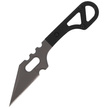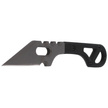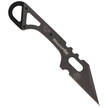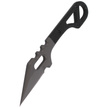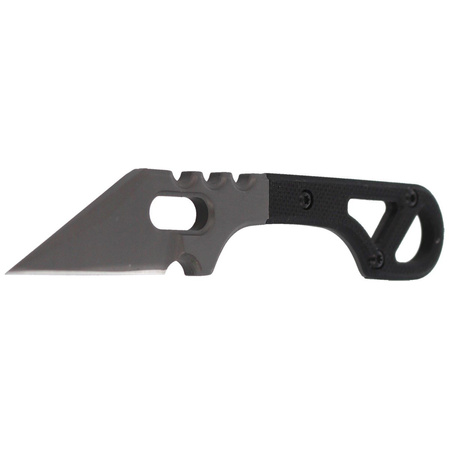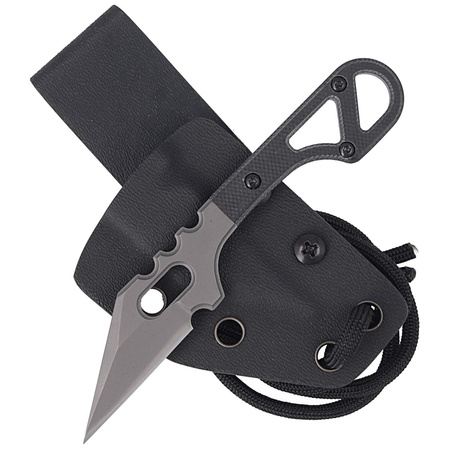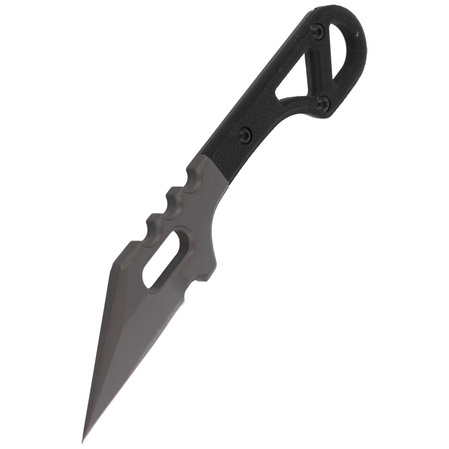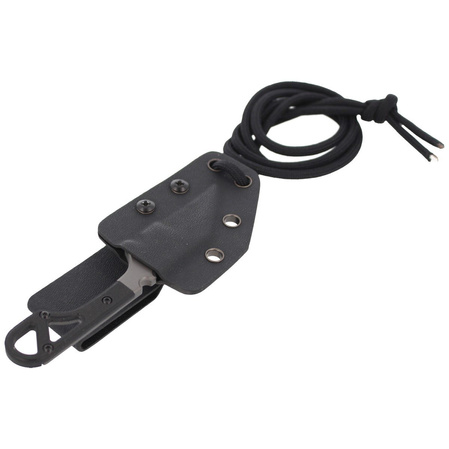BlackFox Spike Neck Knife design by Serge Panchenko (BF-728)
- Spike Neck Knife, design by Panchenko with scabbard suitable for hanging on the neck or belt. The Ukrainian knifemaker's design combines an extraordinary blade with a slim ascetic handle. Thanks to its excellent ergonomics, it fits well in the hand...
Spike Neck Knife, fixed blade knife design by Serge Panchenko with a scabbard suitable for hanging around the neck or on a belt. The Ukrainian knifemaker's design combines an extraordinary blade with a slim ascetic handle. Perfectly balanced with a sharp piercing blade, used for self-defence and small jobs.
Ultra lightweight steel knife with a flat frame. Finished with scratch resistant matt titanium coating (Titanium Coating). Despite its compact size, it fits securely in the hand for effective, deep cuts. In skilled hands incredibly fast and effective.
Warncliff profile head with extremely sharp tip. The perfectly straight cutting edge provides exceptional cutting performance with full force, transferring power to the blade tip for improved scoring strength. The Plain blade has a Flat Grind. On the back of the upper jimping wedge, notched thumb rest.
Handle - asymmetrical in stainless steel and textured G-10 for a better grip. The combination of both materials reduced the weight of the knife and emphasised the refined shape of the handle.
Scabbard - flat, made of kydex. Facilitates quick retrieval of the knife in any situation. Adapted for hanging around the neck, or carrying the knife on a belt in an upright position.
Technical data:
Product number: BF-728
Type of steel: 440C
Blade hardness: 57-59 HRC
Blade length: 40.0 mm / 1.57"
Blade thickness: 4.5 mm / 0.18"
Overall length: 105.0 mm / 4.13"
Weight: 27.0 g / 0.95 oz
Cutting edge type: Plain
Blade type: Warncliff
Handle type: G10 Black
Scabbard: Kydex
Manufacturer: FOX Cutlery, Italy
Przeczytaj!
This product is intended for use only by adults with knowledge and experience in handling sharp cutting tools. Improper use of the knife can result in serious injuries. The blade is extremely sharp and can easily cut through skin and tissue; therefore, extra caution should always be exercised while cutting, and hands should be kept away from the cutting edge. To prevent the knife from slipping, it is recommended to cut on a stable, non-slip surface and avoid excessive force, which may cause uncontrolled blade movement.
Leaving the knife on the edge of a table, countertop, or in easily accessible places—especially where children are present—poses a significant safety risk. The knife should always be properly secured after use, ideally by placing it on a stable surface or storing it in designated knife blocks, protective sheaths, or magnetic strips. The knife should never be used for tasks it is not designed for, such as opening cans or prying objects, as this can damage the tool and lead to dangerous accidents.
A dull blade increases the risk of injury, as it requires more force and is more likely to slip from the material being cut. Therefore, it is essential to sharpen the knife regularly to maintain optimal sharpness. Additionally, proper cleaning and drying of the knife are necessary to prevent corrosion and bacterial growth. Periodic inspection of the handle and blade is recommended to check for cracks, chips, or looseness. If any damage is detected, the knife should be repaired or replaced immediately.
When using the knife, focus solely on the task at hand—avoid talking on the phone, watching television, or other distractions while cutting. Ensure proper lighting in the workspace for better visibility and control. Please note that some countries or regions have laws restricting the ownership and carrying of knives. Before purchasing or using this knife, verify that its use is legal in your location according to applicable regulations.
Following these safety guidelines will help ensure safe and effective knife use, minimizing the risk of accidents and extending the lifespan of the tool.

